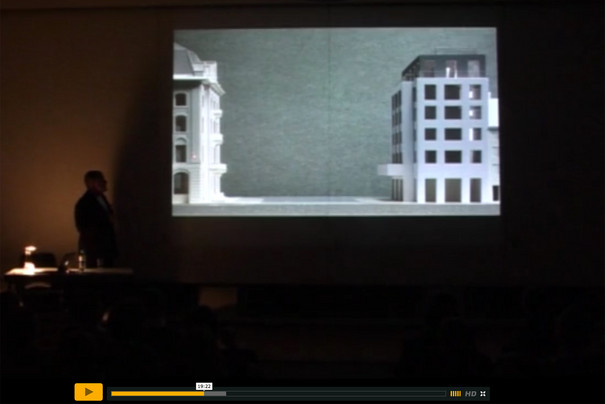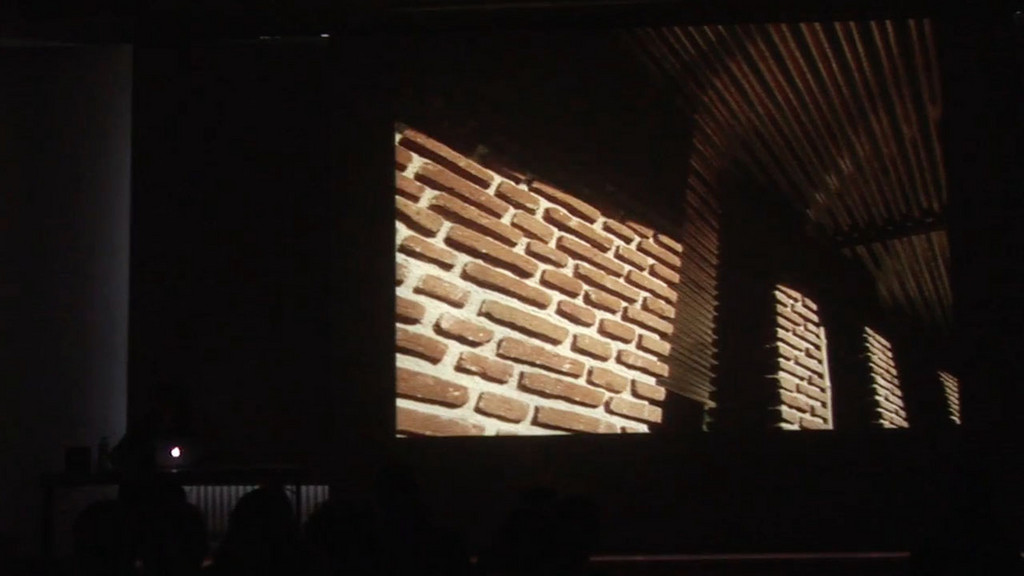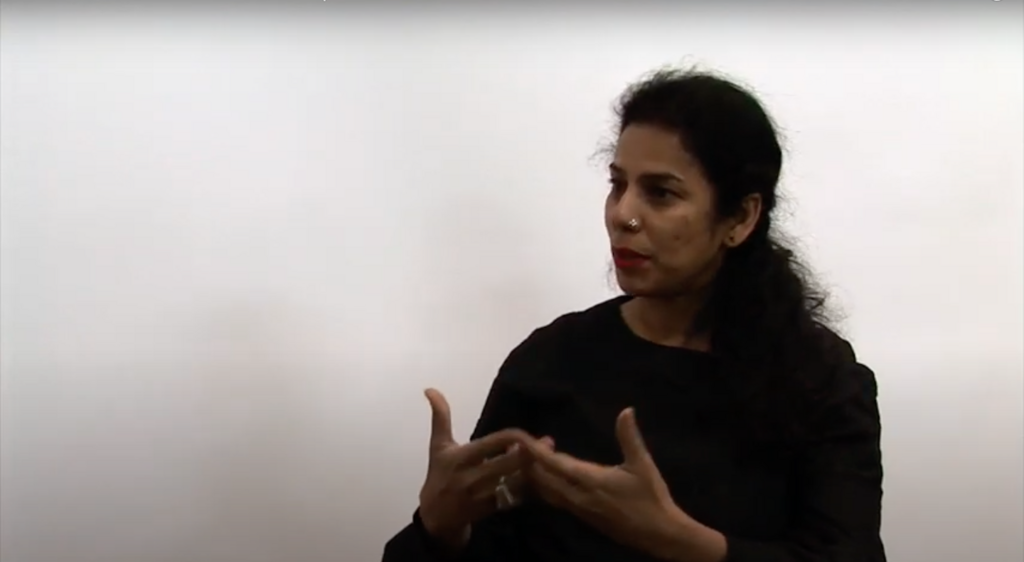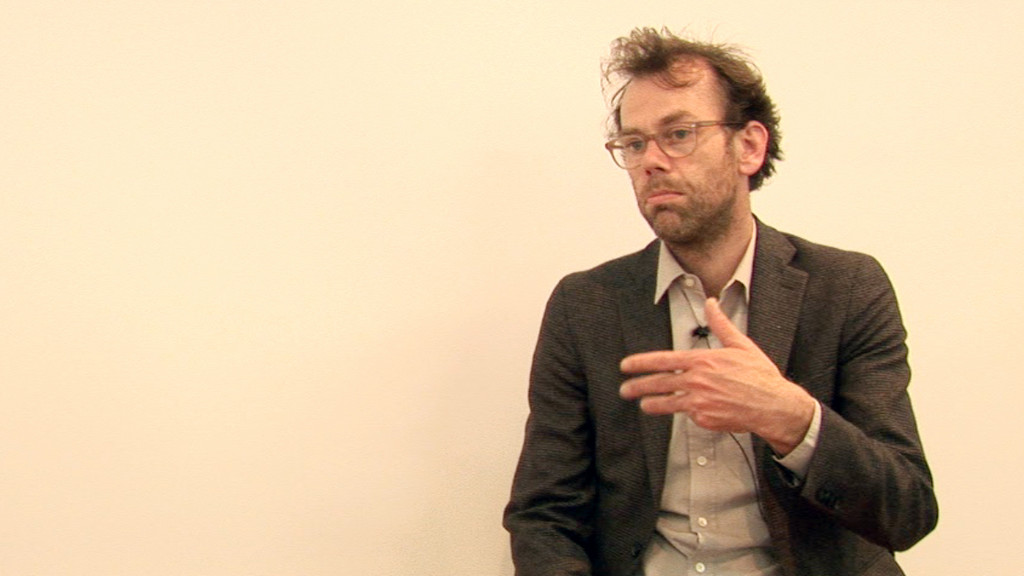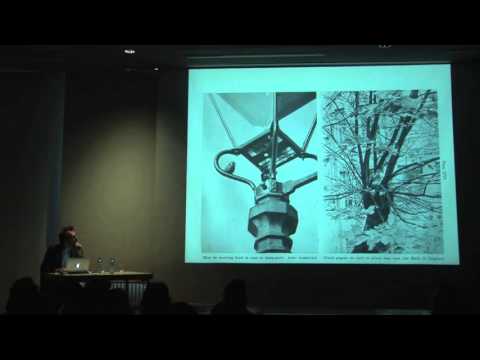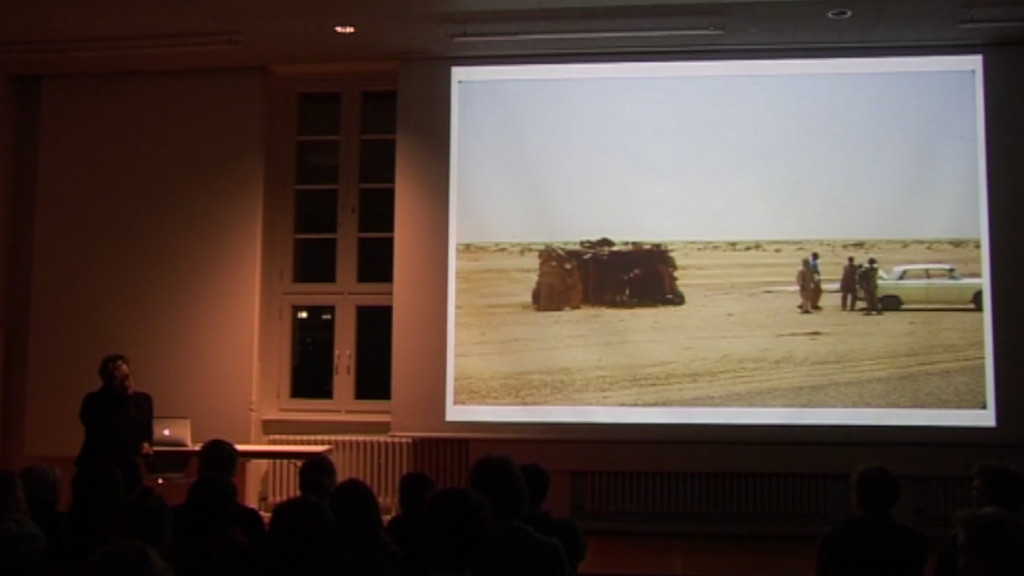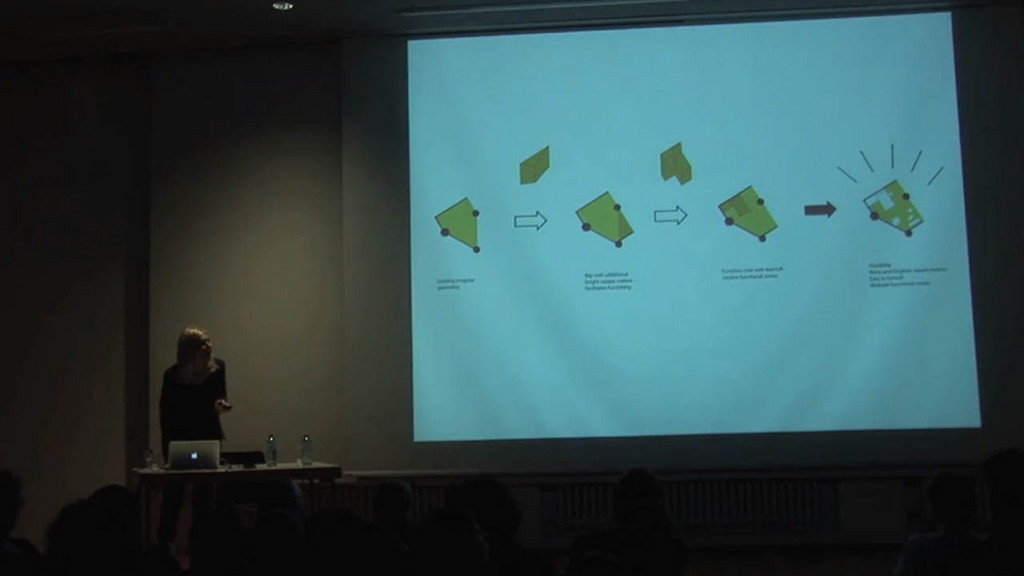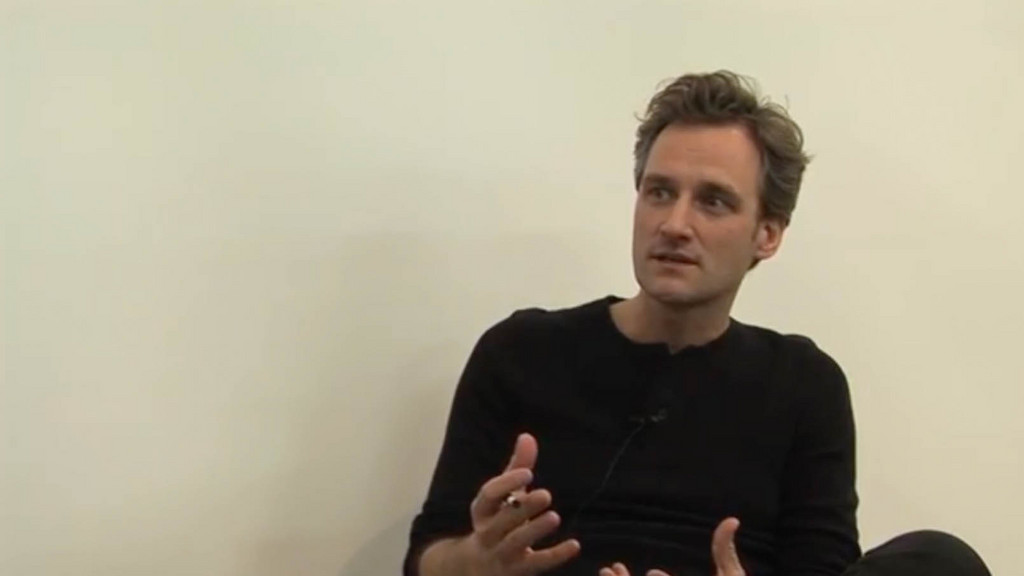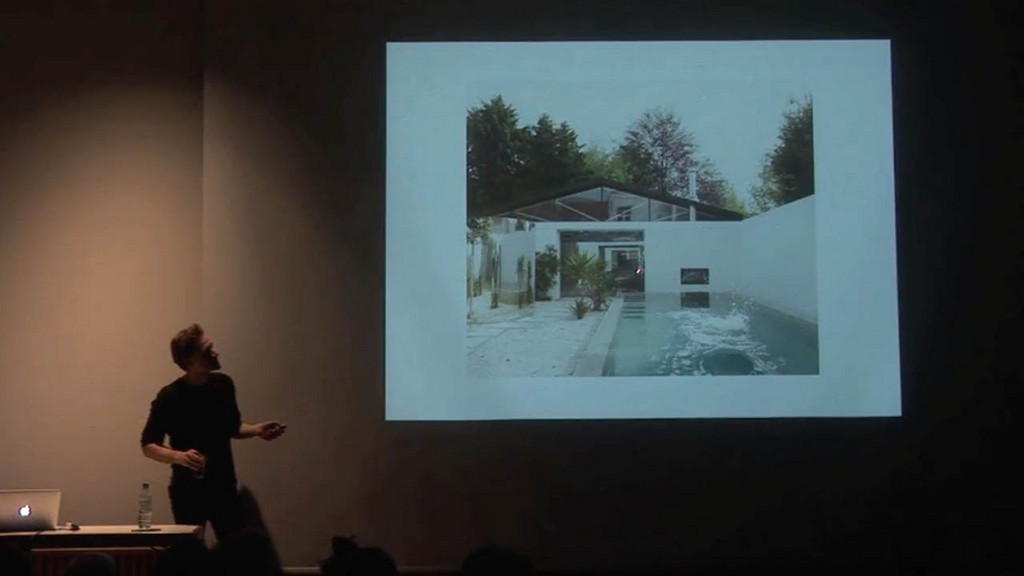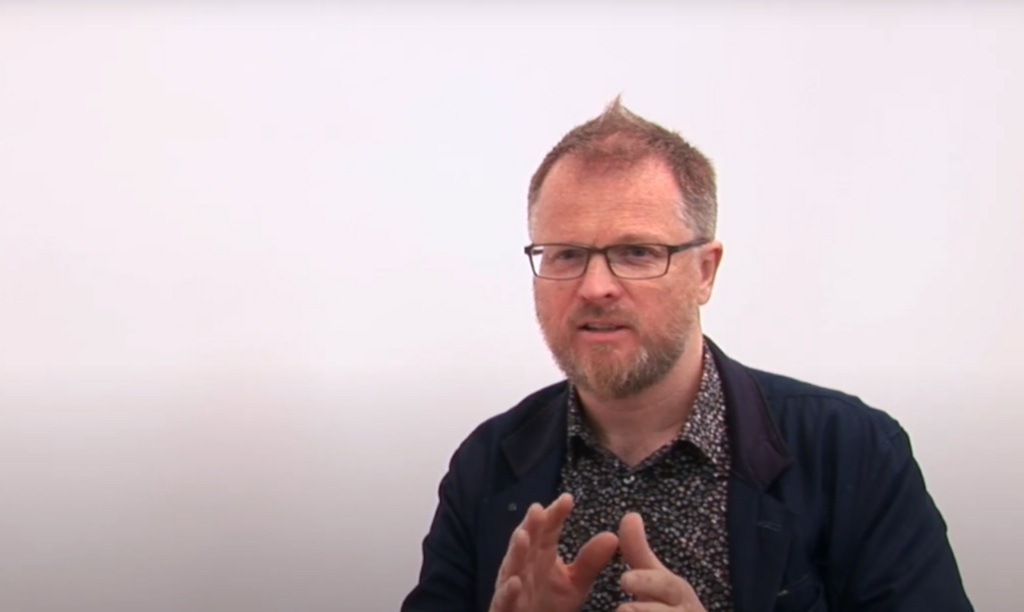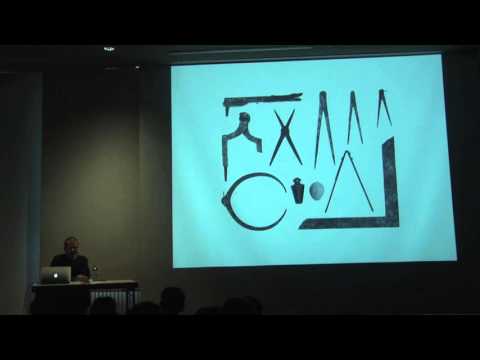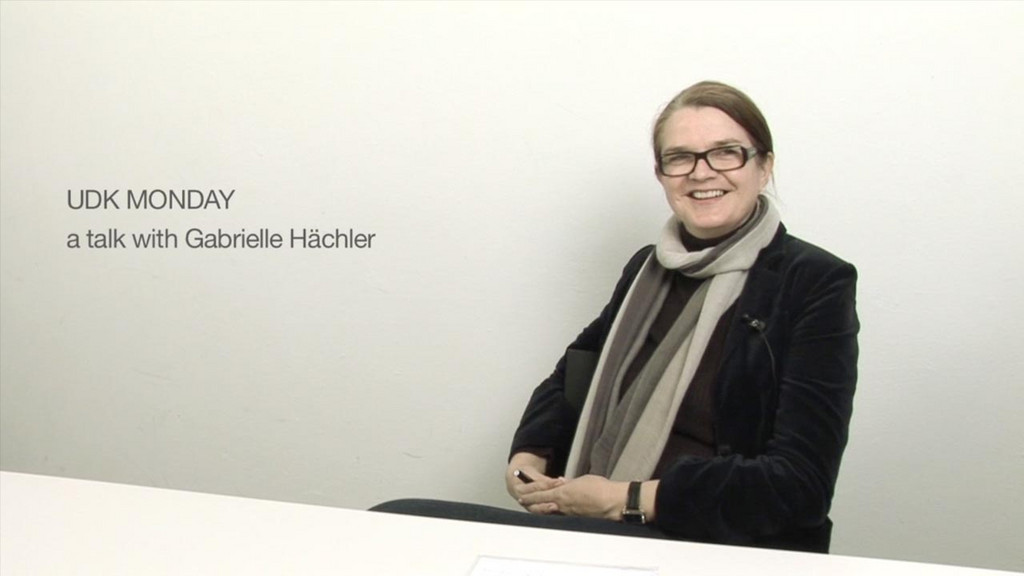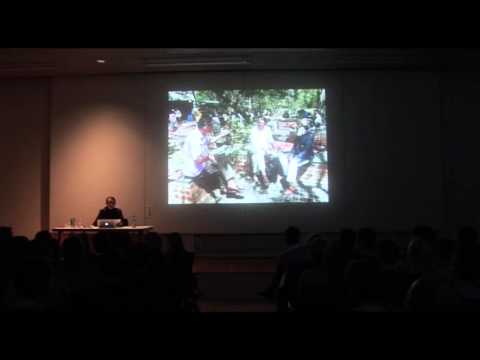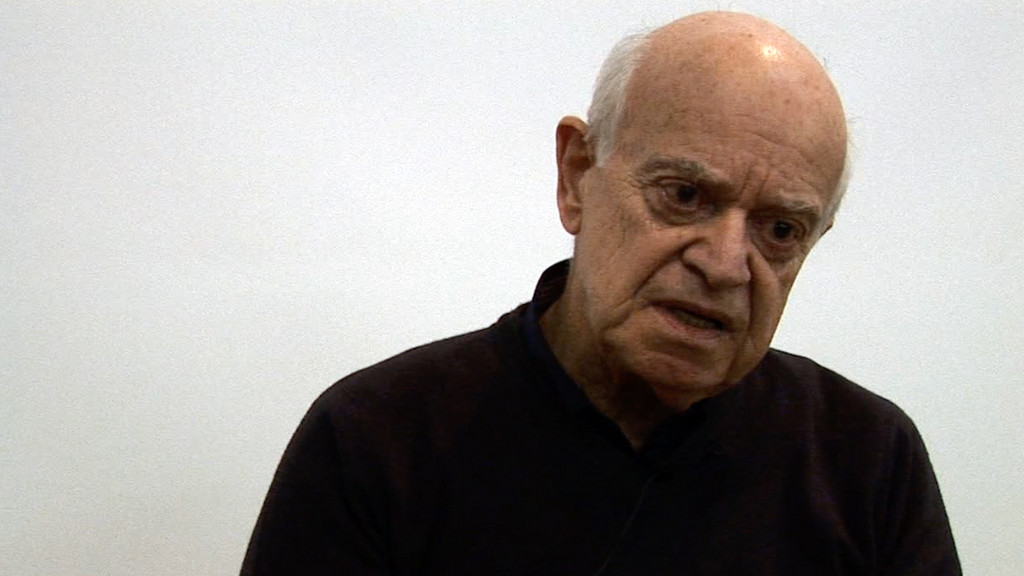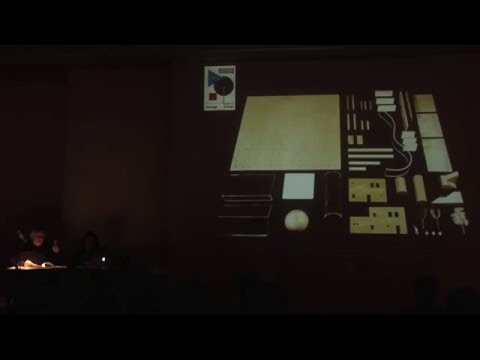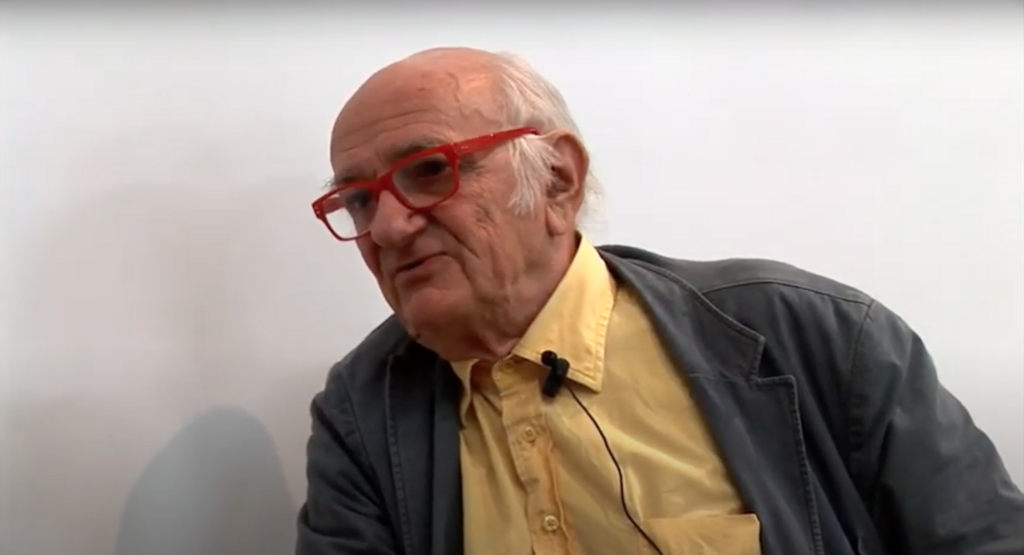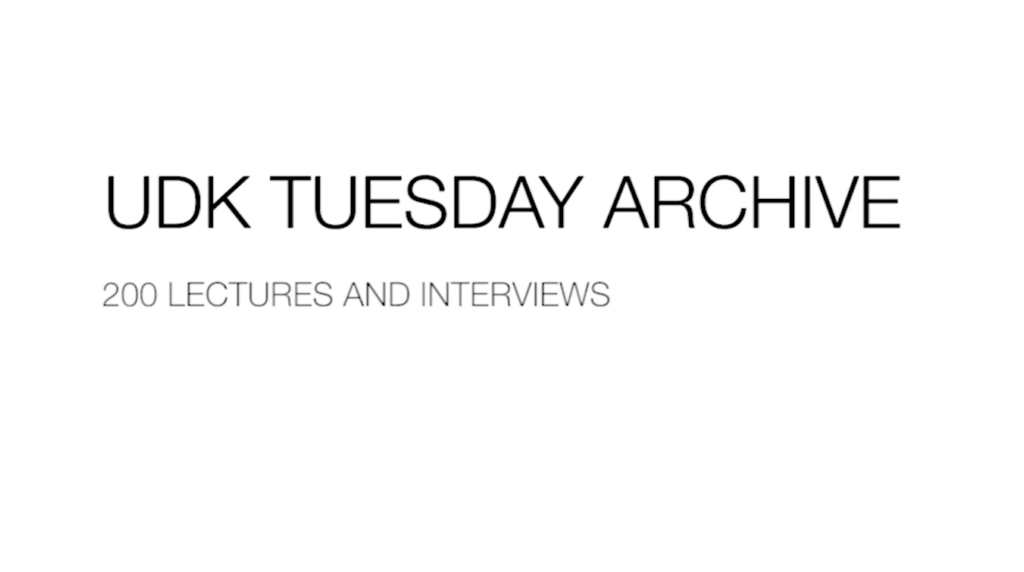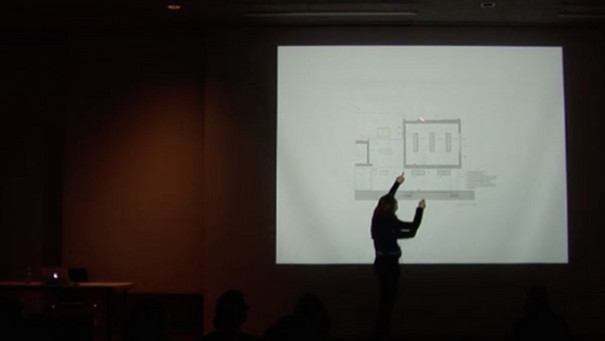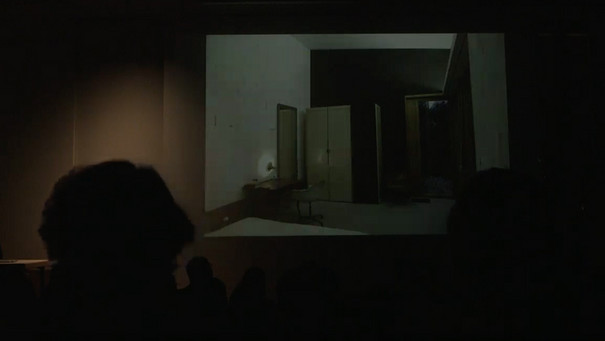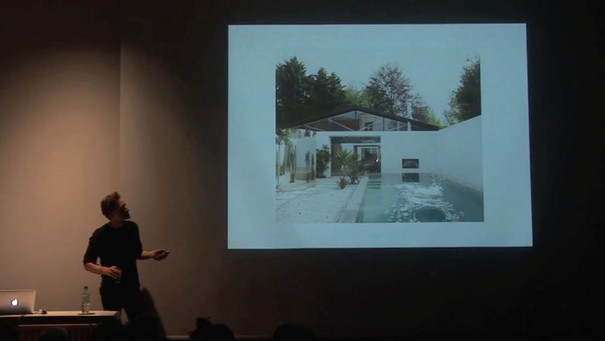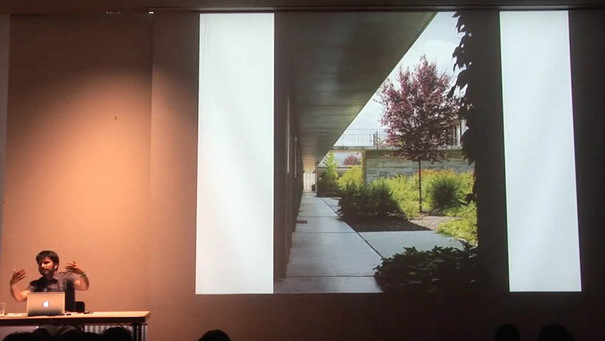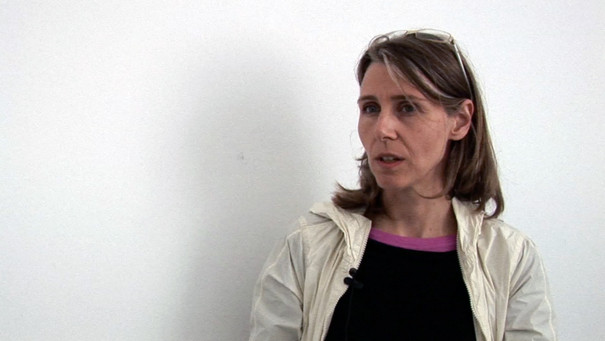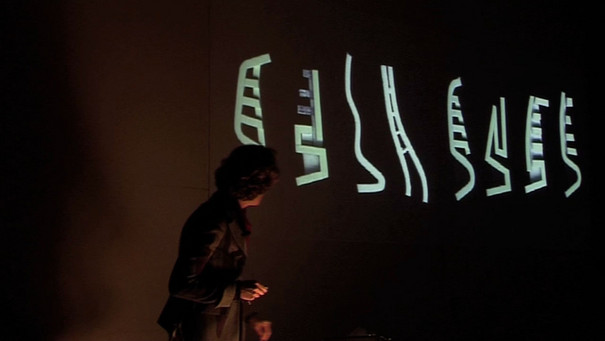Bis auf weiteres - until further notice
Die Finanzierung der Vortragsreihe UdK Tuesday ist den Haushaltskürzungen und reduzierten Mittelzuweisungen an die Berliner Hochschulen seitens der Landesregierung zum Opfer gefallen. Wir bedauern das sehr. Wir bemühen und das Format und den Termin nicht ganz leerfallen zu lassen. Abbonieren Sie gern den Newsletter - here - so können wir Sie auf dem Laufenden halten.
Unfortunately, the funding for the UdK Tuesday lecture series has fallen victim to the state government's budget cuts and reduced funding for Berlin's universities. We deeply regret this. We are trying not to let the format and meetings fall by the wayside. Please feel free to subscribe to the newsletter - here - so that we can keep you up to date.
Weekly Newsletter #12 – July 14, 2020
This week's recommendation is a lecture with Manuel Aires Mateus. Recorded at UdK on December 15, 2008.
Manuel Aires Mateus was born in Lisbon in 1963. He graduated from Faculdade de Arquitectura / U.T.L in Lisbon, in 1986. Together with his one year younger brother Francisco, who graduated just after him, he began collaborating with the Portuguese architect Gonçalo Byrne in 1983. The brothers started developing their own projects as of 1988 and established the office Aires Mateus independently, although it was housed in Gonçalo Byrne’s studio in the first years. The increasing scale of work made them establish a larger and autonomous space to fulfil the demands. Their work spans across two studios today, both based in Lisbon. Although the focus of the two practices is somewhat different, they frequently work together and in combination with other international studios. Manuel and Francisco Aires Mateus also teach together at various institutions, such as Harvard Graduate School of Design, USA, the Accademia di Architettura in Medrisio, CH and at architecture faculties in Lisbon.
This week's recommendation is accompanied by a recent text, written by Manuel Aires Mateus, in June 2020. We asked him to respond to his own lecture today, twelve years after the initial recording in 2008. The text he sent along responds to the guiding questions of what motivates his practice today and whether his values have changed since the recording.
The Rest is Silence
We wouldn’t be able to say what Architecture is, or even what each project may be. We know that each project has its specific condition, unique and unrepeatable. Conditions will often resemble one another, but never be the same.
A project is born out of an intent, a place, a desire, a memory, an image, an ambition.
It is born to start a journey, which may be straightforward or convoluted. It is born creating its own path, its own evidence.
The project is born out of what we know, but also what we don’t yet know, what we desire. Many times, it is born through the revelation of things we knew but were concealed. The project is a path of reasoning and discovery.
The project creates its own field of possibilities to roam through, travels with us, uncovering options and validating our choices. Our job is to ensure each unique condition is developed to its full potential.
And yet, that unrepeatable circumstance is generated from what is close to us, what is familiar and well-known, things immersed in life, quotidian since time began.
Through drawing, we chase the wonder of a discovery, unique and unrepeatable. A venture we must start from the beginning every time. An endeavour of commitment, attentiveness, freedom; fully informed by our discipline, but still close to life. We strive to understand and combine all things, all particularities, looking for the difference, the singularity that gives each project its true identity.
Lisboa, 2020
Manuel Aires Mateus
–––––––––––––––––––––––––––––––––––––––––––––––––––––––––––––––––––––––––––––
Weekly Newsletter #11 – July 07, 2020
This week's recommendation is a talk and lecture with Anupama Kundoo. Recorded at UdK on April 26, 2016.
Anupama Kundoo was born in Pune, India in 1967. She graduated from Sir JJ College of Architecture, University of Mumbai in 1989 and received her PhD degree from TU Berlin in 2008. She established her own practice in 1990 in Auroville, India, and her second one in 2014 in Madrid. She works and lives in Berlin today, currently teaching at FH Potsdam.
Kundoo taught at the Technical University Berlin and the Technical University Darmstadt in 2005 and worked as Assistant Professor at Parsons School for Design, New York until 2011. Subsequently, she took a position as a senior lecturer in the University of Queensland. Since 2014 she holds the chair for Affordable Habitat at the European School of Architecture and Technology, Universidad Camilo José Cela in Madrid.
Find out more about Anupama Kundoo's work here.
In this lecture from 2016, Anupama Kundoo leads us through a series of projects, realised during her past 25 years of practice. Being witness to the unprecedented process of urbanisation and a massive social transformation in cities throughout India, she works by sustaining local building activities with a profound interest in the socio-economic and environmental impact of material and building technologies. In ‘Building knowledge’, as she titles her lecture, she pursues the vision of working trans-disciplinary, including the skills of locals, further developing existing methods, and thus generating new collective knowledge through architecture. The projects that Anupama Kundoo showcases in this UdK Tuesday give a great perspective on her approach to building design and the associated research fields that she has addressed during the course of her career.
Lena Brandt
on behalf of the UdK Tuesday team
–––––––––––––––––––––––––––––––––––––––––––––––––––––––––––––––––––––––––––––
Weekly Newsletter #10 – June 30, 2020
This week's recommendation is a talk and lecture with Tom Emerson. Recorded at UdK on June 2, 2015.
Tom Emerson was born in Paris, France in 1970. He studied architecture at the University of Bath, the Royal College of Art in London and the University of Cambridge, UK. He taught at the Architectural Association from 2000 to 2004, then in Cambridge until 2010 and has worked as a Professor of Architecture and Construction at the ETH Zurich in Switzerland since then. In 2001, he founded the studio 6a architects in London, UK, together with Stephanie Macdonald.
Find out more about the content of his teaching here.
Our recommendation this week is accompanied by an introductory text from Max Kahlen, co-founder of the architecture studio Dyvik Kahlen, based in London and Porto.
Tom Emerson’s presentation feels like a beautiful journey that brings details, materials, culture, form, construction and the city –acknowledging its large, strange and sometimes surreal complexity– into one continuous space. His awareness moves from his studio, to natural history, to the ground, to collaborations, from the planned to the unplanned, from learning to teaching and back. 6A’s projects come across as moments within this journey and seem to distill this inspiring amalgamation of curiosities that operate on many levels within 6A’s work. After I have lived and worked in London for many years Tom’s description gives me fond memories of this city landscape that is odd and deeply fascinating.
Max Kahlen
–––––––––––––––––––––––––––––––––––––––––––––––––––––––––––––––––––––––––––––
Weekly Newsletter #9 – June 23, 2020
This week's recommendation is a lecture and text from Jean Philippe Vassal. Recorded at UdK on November 5, 2012.
Jean Philippe Vassal was born in Casablanca, Morocco in 1954. He graduated from the School of Architecture of Bordeaux in 1980. After working as an urban planner in Niger, Africa, from 1980-85, together with Anne Lacaton he established the studio Lacaton & Vassal. He is a professor for Design and Urban Development at UdK since 2012.
As an introduction to this week's Newsletter, Jean Philippe Vassal sent us a text from 1995 that both he and Anne Lacaton still believe in very strongly today. The text was somewhat of an early manifesto and is still considered pertinent twenty-five years later. The original was written in French and is called "Il fera beau demain".
We have done our best to translate it into English to accompany this Newsletter.
Il fera beau demain
Anne Lacaton & Jean Philippe Vassal
TRUE IMAGES/ PERSONAL IMAGES
Images of Africa, memories, recurring :
desert, moors, ocean, immense flat territories where building seems ludicrous, ephemeral
by the force of things, and frequently necessary.
Encounters, poems, emotions.
Unusual objects, shreds of plastic suspended across rural land, secret gardens,
friendships, complicities.
Photographs imperfect enough not be brazen.
OTHER IMAGES/ QUESTIONS
Everyday images, multiple information, true, false? permanent
communication, international events throughout the world, very close or very distant, known abroad within a few seconds.
And one certainty: the world, unjust society.
Here one cannot build enough schools or social housing, there a hospital needs to be closed as there are no means to maintain it, while elsewhere we are constructing public buildings that are too ambitious, too expensive, even useless.
To be able to build two houses, two schools, two buildings for the price of one…?
Invent, take risks, change.
BEAUTY IN THE OBVIOUS
The work of art just before technical prowess, in the sense of engineers creating - machines, factories - ; there are no longer 36 solutions, there are one or two responses and most certainly a single best one. No architecture.
Mathematically we resolve an implementation problem, one of function, a technical problem, an economic one, a social one. Eventually this will suffice. It is already a lot.
Auto-construction: sheds, huts, factories, suburban commercial centres : a box and a title.
What is just, what is surely outspoken: readability.
(False) images of speed: wings of an airplane, horizontal cladding, buildings ready to take off, immediately suggesting the destination, beaches and coconut trees, …
Do not pretend.
DWELLINGS
Too much comfort. Deprived of extraordinary architecture for the sake of too much comfort, bourgeois.
New ways of inhabiting, of living.
The house: invent something else, remove the foundations, mobility, nomadism.
The box, the parallelepiped : what else to make?
FARNSWORTH house, and then?
Working on transparency, filters, open buildings, permeable to the climate.
Invent house-machines, flower-houses.
PROJECT
There is neither evidence nor reference.
Every time a new problem arises, gauging constraints, needs, expectations.
Asking good questions and responding to these rigorously, one after another.
Always asking oneself the question of necessity, of sufficiency; what is important and what is not.
Avoiding accumulation, searching for simplicity, for readability. To pursue every detail that is somewhat complicated as a consequence of a thought mistake. To liberate oneself of the form other than architectural or given by context.
Building from the inside.
Precision of implementation
The perfect resolution of function
Use: movement, sensation, interior perception, appropriation
The meaning, what the building evokes : its content, its life, its time
Cost: economy, the appropriate means, the lowest cost to build more
The rigour of plans
A certain urge to organise, to fill, to calculate, to compress, to dimension, to begin anew, to read and reread the program, to save and to simplify.
And then,
the magical moment of when the images return, or when two thought out directions align perfectly, interlock, nourish one another, as if enchanted.
The euphoric moment of easiness, as if miraculously and subconsciously the joyful and lively part, that give meaning to the project, have guided the laborious process of its development all along.
Born where one does not know, felt somewhere, far away, in Africa or abroad, among books of poetry, films, the smoke of bars, train compartments, terminals, lies an image, a tenacious idea that one awaits and delicately gathers, that one protects, preserves, forgets, then rediscovers.
It remains throughout the entire process of the project and comes to an end by presenting itself as indispensable.
Architecture will be direct, utile, precise, affordable, free, joyous, poetic and cosmopolitan
It will be nice out tomorrow.
Written in 1995 and re-selected by
Jean Philippe Vassal in June 2020.
–––––––––––––––––––––––––––––––––––––––––––––––––––––––––––––––––––––––––––––
Weekly Newsletter #8 – June 16, 2020
This week's recommendation is a lecture with Dorte Mandrup. Recorded at UdK on December 2, 2014.
Dorte Mandrup was born in Aarhus, Denmark in 1961. Studies in sculpture, ceramics and medicine have influenced her approach to architecture, which has always been physical and practical. Dorte Mandrup graduated from the Aarhus School of Architecture in Denmark in 1991. Eight years later she founded her Copenhagen based studio where she continues to be Creative Director. Her design philosophy can still be witnessed in all of her work, as she remains the design responsible for all projects. Today, about 60 people work in Dorte Mandrup's office on national and international projects. The office is well known for designing spaces that engage the user, are aesthetically pleasing and contextually relevant.
Find out more about Dorte Mandrup and her work here.
Throughout her talk, Dorte Mandrup explains some of her work in detail, such as the Råå Preschool in Sweden, the Jaegersborg Water Tower in Denmark, exemplifying her geometric way of working or a new building in an old shell, in Copenhagen, Denmark.
–––––––––––––––––––––––––––––––––––––––––––––––––––––––––––––––––––––––––––––
Weekly Newsletter #7 – June 9, 2020
This week's recommendation is a lecture from Sou Fujimoto, recorded on May 29, 2012 and a lecture from Go Hasegawa, recorded on July 4, 2012, at UdK.
Sou Fujimoto was born in 1971 in Hokkaido, Japan. He graduated from the University of Tokyo in 1994 and established Sou Foujimoto Architects in 2000. His work is well known for delicate structures and permeable enclosures. Furthermore, his built projects in Europe and Japan frequently play with his idea of function following human behaviour.
Our recommended lecture from 2012 demonstrates Fujimoto's willingness to explore how human function can influence our built environment. “The beginning of architecture is not the space, not the form", he says, "but the relationship between the human body and the space.” His projects render the boundaries between architecture and furniture almost invisible, as he clearly illustrates with the example of House NA in Tokyo. He mentions the photographs of Iwan Baan, made with a mobile phone camera to depict everyday scenes, which ultimately decide how architecture will be used, sometimes contrary to the initial suggestions perhaps envisioned by the architect. In addition to fluid use of space, Fujimoto suggests that by building many layers, an architect can create a "forest" of transparency and opacity. This can enable multiple levels to become important for dominating space - such as specific window locations framing layers of the sky or the greenery planted by neighbours in the case of House N.
Weekly Newsletter #6 – June 2, 2020
This week's recommendation is a talk and lecture with David van Severen. Recorded at UdK on February 7, 2017.
David van Severen was born in Ghent, Belgium in 1978. He graduated in Architecture and Urbanism at the University of Ghent, Belgium and at the Escuela Tecnica Superior de Arquitectura in Madrid, Spain. Since 1995 he designed and made several objects, installations and furniture and worked for various offices. He was a teacher and guest critic at the Academy of Amsterdam, the TU Delft, and the Berlage Institute in Rotterdam, Netherlands and the Architecture School of Versailles, France. He is currently guest tutor at Harvard Graduate School of Design.
Kersten Geers was born in 1975 in Ghent, Belgium. He graduated in Architecture and Urbanism at the University of Ghent, Belgium and at the Escuela Tecnica Superior de Arquitectura in Madrid, Spain. He was a professor at the University of Ghent, and visiting professor at Columbia University, NYC, and the Academy of Architecture in Mendrisio, Switzerland and is currently teaching at the EPFL, Switzerland and Harvard Graduate School of Design. He is a founding member of the architecture magazine San Rocco.
Together with Kersten Geers he founded OFFICE Kersten Geers van Severen in 2002. OFFICE is renowned for its idiosyncratic architecture, in which realisations and theoretical projects stand side by side. The projects are direct, spatial and firmly rooted in architectural theory. The firm reduces architecture to its very essence and most original form: a limited set of basic geometric rules is used to create a framework within which life unfolds in all its complexity.
Weekly Newsletter #5 - May 26, 2020
This week's recommendation is a lecture with Heide & von Beckerath. Recorded at UdK on April 28, 2014.
Ein UDK-Monday vor sechs Jahren, noch nicht allzu lange her also. Das Büro Heide & von Beckerath, Verena von Beckerath und Tim Heide, berichten aus ihren Entwurfs- und Baugeschehen. Ausgeführtes, Nicht-Ausgeführtes, Abgeschlossenes, Werdendes. Ein typischer Werkbericht aus der UdK-Reihe, könnte man sagen. Und doch ist es in diesem Fall anders. Die beiden Architekt+innen haben mit ihrem Berliner Büro nicht unmaßgeblich zu einer neuen Bauweise gerade im Bereich des Wohnungsbaus beigetragen. Spricht man heute über einen innovativen Berliner Wohnungsbau, sind es zumeist ihre Bauten, die man an erster Stelle nennt, auch wenn nach wie vor die Investorenarchitektur mit retrospektiven Grundrissen und Gesellschaftsbild sowie wertvoll erscheinendem Formenvokabular bei weitem das Bild des Berliner Baugeschehens bestimmen. Vorgestellt werden die allen bekannten Häuser am Gleisdreieckpark mit den Splitlevel-Wohnungen, in der Flottwellstraße am Gleisdreick-Park, die sich so wohltuend von den Nachbarn und Zeitgenossen absetzen, bei dem die Architekt+innen an so kleine Dinge wie Sitzstufen dachten, wie vor Ihnen zum Beispiel Herman Hertzberger, das Haus in der Ritterstraße und jenes am Blumengroßmarkt gegenüber dem Jüdischen Museum. Immer geht es um Kostenminimierung bei gleichzeitiger Schaffung von "unterschiedlichen Raumkonfigurationen" durch ausgefeilte Grundrissarbeit insbesondere an den Grenzen und Schwellen zwischen Gemeinschaft und Privatheit, Innen und Außen. Die Formensprache ist industriell, etwas raw, und damit durchaus zeitgemäß.
Vieles aber begann wohl mit einem Prototyp, der, wie viele Ideen zur Etablierung eines Standards, ein Einzelstück blieb. Das Wunschhaus #1, 1996-1999 in Hamburg errichtet, sollte ein Haus für ein neues Zusammenleben sein, aus "Kernräumen" und einem "Umraum". Thema dieses Wohnhauses war, so die beiden im Vortrag, räumliche Eigenschaften zu untersuchen, die "zum Öffentlichen tendieren". 2011 reisten sie noch einmal nach Hamburg, um zu sehen, wie man denn dort nun so wohnt, und um Fotos nachzuproduzieren. Anybody home?, könnte man mit Pierre Zoelly und seiner Recherchefahrt zu den eigenen Wohnhäusern fragen. Ein kleines Haus, irgendwo zwischen dem Farnsworth housevon Ludwig Mies van der Rohe und Le Corbusiers Maisons en série: "Aber stolz kann man auf ein Haus sein," schrieb Le Corbusier, "das praktisch wie die eigene Schreibmaschine ist." Tim Heide und Verena von Beckerath dachten wohl eher an ein anderes praktisches Industrieprodukt – den Rasierapparat. In der wirklich wunderbaren Gegenüberstellung eines Braun-Elektro-Rasierers und der lakonischen Fassade – ihrerseits eine Referenz an Robert Venturi? – scheint vielleicht hindurch, dass Tim Heide einmal zwei Semester lang, wie hieß es noch?, richtig: Industriedesign! an der UdK begonnen hat (das nun unter Produktdesign läuft, um diese Frage hier auch noch zu beantworten). Jedenfalls fällt auf, dass der berühmte Standard 63 von Hans Gugelot als Vergleichsmodell das Haus sekundiert. Sehr elaboriert – dieser Vergleich fehlt leider im Vortrag, ist aber auf ihrer Homepage zu finden. Leider konnte ich die beiden nach dem Vortrag aus der Konserve nicht mehr nach dem Rasierer und seiner Bedeutung fragen, ich habe mich ja heute erst, 2020, dazugeschaltet. Standard jedenfalls, dieser zentrale Begriff der Moderne, fällt häufig, und man geht wohl nicht fehl in der Annahme, dass er eines der Zentren der Arbeit von Heide & von Beckerath bildet.
Mindestens so spannend wie die Projekte sind aber die kleinen Intermezzi, die von Spaziergängen durch Berlin oder auch Düsseldorf und Lagos berichten – es lohnt sich, hier genau hinzuhören. Denn vieles in dieser Architektur scheint aus einem vorurteilsfreien Hinsehen und der Analyse des Vorhandenen zu resultieren.
Matthias Noell, 25. Mai 2020
Heide & von Beckerath is based in Berlin. Their design process leads to an ongoing research involving architecture and society, sustainability and technology.
Verena von Beckerath pursued studies in sociology, art theory and psychology at Université de Paris Sorbonne and Universität Hamburg and studied architecture at Technische Universität Berlin. After her studies, she was an assistant professor to the Chair of Design and Urban Development with professor Adolf Krischanitz at UdK. Since 2016, she is a professor of architecture at Bauhaus-Universität Weimarwhere she holds the Chair for Design and Housing.
Tim Heide studied architecture and industrial design at Technische Universität and Universität der Künste Berlin. He was a professor of architecture at Technische Universität Berlin with a special interest in design and building construction.
–––––––––––––––––––––––––––––––––––––––––––––––––––––––––––––––––––––––––––––
Weekly Newsletter #4 – May 19, 2020
This week's recommendation is talk and lecture with Bob Sheil, recorded at UdK on April 28, 2015.
Watch this talk to get a deep insight into the mind of one of the great architecture educators at work right now. Bob has risen through the ranks of London's Bartlett school, taking his intuitive workshop based approach to the very top.
What you can learn from this talk is:
1) how, why and when to trust your intuitions
2) how to listen when the material you are working with is trying to tell you something
3) what you can expect to get out of a good architectural education
4) what you have to bring to it yourself.
Bob Sheil is the director of one of the finest schools of architecture in the world, a public university that emerged from a hundred year sleep of genteel irrelevance about 30 years ago to offer the expensive, private AA school a run for its money. I studied at the Bartlett in the late 90s, Bob was just a lowly unit tutor back then, but it was clear to me that his visceral, intuitive, intellectually rigorous approach was going places. I am grateful that I got as much exposure to him as I did. This talk boils down the essence of his approach. It will be of great use to anyone who is learning our craft. There is no better time than now to pause and think about what you are getting from your education and how you can push it further, this talk will give you food for thought, as well as showing some beautiful and thoughtful eye candy into the bargain.
Stephen Molloy
Our recommendation is accompanied by an introductory text from Stephen Malloy, who studied architecture at UdK, graduating in 2006. He worked internationally before coming back to teach at UdK. From 2009 to 2014 he was an assistant and then a guest Professor in 2015 for Studio Sauerbruch, before founding Fundamental together with his former peer, Gunnar Rönsch, in Berlin. Next to their architecture practice, the two started producing furniture and frequently experiment with new ways to use favourite old materials, playing with patterns and colours.
Find out more about Stephen Molloy's work here.
Weekly Newsletter #3 – May 12, 2020
This week's recommendation is talk and lecture #100 with Gabrielle Hächler, recorded at UdK on November 7, 2011.
Gabrielle Hächler was born 1958 in Lenzburg, Switzerland. She studied Art history at Zurich University and architectural studies at the Federal Technical Polytechnic (ETH) Zurich. 1988 she received her degree at the ETH Zurich under Prof. Mario Campi. After working as an assistant Professor for 4 years in the Department of Construction at the ETH Zurich, she opened her own architectural office in 1988. Temporary cooperation with other architects and artists. Since 1995 co-operation with Andreas Fuhrimann. Hächler held a Guest Professorhsip at ETH Zurich from 2009 to 2011. From 2011 to 2014 she taught as a Professor at UdK.
Find out more about Fuhrimann Hächler's projects here.
UdK Tuesday #100 is one of the older videos we have in our archives, we are excited to share it with you, showing how far back the recordings go.
Following her Professorship at UdK, Gabrielle Hächler gave another lecture and interview worth watching. These were recorded as UdK Tuesday #199 on January 30, 2018.
–––––––––––––––––––––––––––––––––––––––––––––––––––––––––––––––––––––––––––––
Weekly Newsletter #2 – May 5, 2020
This week's recommendation is a talk and lecture with Tassos Biris and Sofia Tsiraki. Recorded at UdK on January 19, 2016.
Tassos Biris was born in Athens in 1942. He studied at the Athens School of Architecture and taught at the same institution as a Professor after finishing his studies. Sofia Tsiraki was born in Athens in 1970. She graduated from the School of Architecture of the National Technical University of Athens (NTUA) in 1997, where she is an Assistant Professor and PhD candidate in the department of Architectural Design.
Today Tassos Biris runs an office together with Sofia Tsiraki in Athens.
Find out more about their work and see their extensive sketches here.
Our recommendation is accompanied by an introductory text from Professor Bettina Goetz, who invited Tassos Biris in January 2016, following their chair's excursion to Athens, Greece.
"Die Arbeit von Tassos Biris haben wir 2015 im Zuge der Recherche für unsere damalige Exkursion nach Athen entdeckt.
Neben seinem vielfältigen architektonischen Oeuvre war es besonders auch die außergewöhnliche Qualität seiner Wohnbauten, die unser Interesse geweckt hat. Komplexe Typologien führen in Verbindung mit einer hohen Detailierungs- und Ausführungsqualität zu wirklich herausragenden Bauten (z.B. Apartmentbuilding in Polydroso 1979).
Im Zuge der Exkursion haben wir ihn persönlich getroffen, er hat eine höchst inspirierende Führung durch Athen und seine Bauten mit uns unternommen und bei seinem Vortrag an der UdK Berlin einige Monate später, haben wir unsere Diskussion über die Unterschiedlichkeit bzw. die Gemeinsamkeiten von Athen und Berlin fortgesetzt.
Tassos Biris ist 1942 in Athen geboren, hat dort an der Athens School of Architecture studiert und dort nach Beendigung seines Studiums auch als Professor unterrichtet.
Heute führt er sein Büro gemeinsam mit Sofia Tsiraki."
Prof. Bettina Goetz
–––––––––––––––––––––––––––––––––––––––––––––––––––––––––––––––––––––––––––––
Weekly Newsletter #1 – April 28, 2020
This week's recommendation is a talk and lecture with Hans Walter Müller. Recorded at UdK on June 21, 2016.
Hans Walter Müller was born in 1935 in Worms, Germany. From an early age on, he became and remained interested in magic tricks and arts. After receiving his diploma in Darmstadt in 1961, he continually pursued specific studies in Paris, focussing on materials of his time: artificial light, the projection of images, the plasticity of material and electrical motors. As part of the "Art Cinétique" movement, he is known to be the creator of inflatable structures, allowing these to become inhabitable structures through inflation. Since 1971 he resides in an inflatable house close to Paris. He was rewarded multiple prizes and worked together with artists such as Jean Dubuffet or Salvador Dalí.
Our recommendation is accompanied by an introductory text from Ludwig Engel, a futurologist and urbanist, living and working in Berlin. He teaches, curates exhibitions, publishes books and advises companies and public institutions.
Find out more about Ludwig Engel here.
I think Hans Walter Müller is a really interesting figure that started out in the late 60s when inflatables where becoming quite a thing in artistic-architectural circles all over Europe, pushing the idea of architecture towards temporality, mobility and flexibility. Despite (or because?) of his very German name until today he remains quite unknown in Germany but is considered an icon in cinetic, parasitic and inflatable installations in France that inspired generations of architects and artists. And I can think of noone continuously pushing the limits of how to live with and in inflatables until today, as Müller, who‘s inflatable home resonates with me quite strongly as a „utopian ghost“ - a future that we could have had and maybe still wait for, especially these days where we are locked away in our boring standardized apartments.
Maybe I would like to give a quick nod here to Haus-Rucker-Co, whose founding member, Zamp Kelp, was a professor at UdK for a long time. Their inflatable works from „Ballon for 2“ and „Oasis No.7“ to „COVER“ are probably the most seminal works of inflatable architecture and you should check them out if you haven't come across them already.
Ludwig Engel
–––––––––––––––––––––––––––––––––––––––––––––––––––––––––––––––––––––––––––––
Die Vorträge der UdK Tuesday-, ehemals Monday-Reihe finden seit 2005 am Institut für Architektur und Städtebau der Universität der Künste Berlin statt. In ihren bislang 225 Ausgaben haben ArchitektInnen wie TheoretikerInnen ihre Arbeit vorgestellt und mit Studierenden, Lehrenden sowie interessierten Gästen diskutiert.
Im Rahmen eines aus zentralen Mitteln geförderten Projekts des Fachgebiets Sobejano werden die dokumentierten Vorträge im UdK TUESDAY Archiv nun sukzessive dem architektonischen Diskurs sowie der interessierten Öffentlichkeit Berlins zugänglich gemacht. In diesem Zuge findet ferner eine Wiederaufnahme in studentischer Redaktion durchgeführter Interviews statt und die Vortragsreihe so eine weitere, an aktuellen Fragen architektonischer Ausbildung orientierte Ergänzung.
